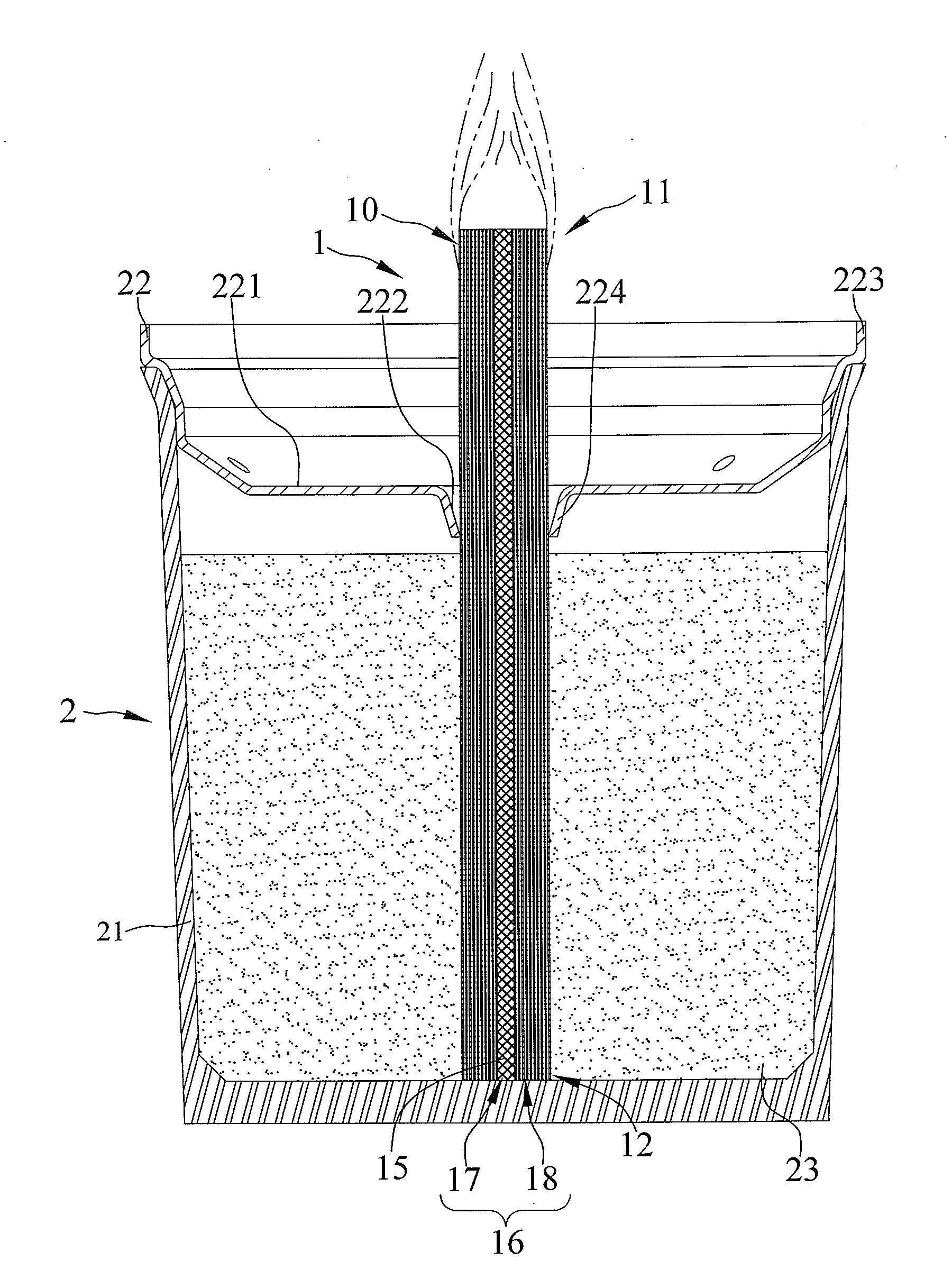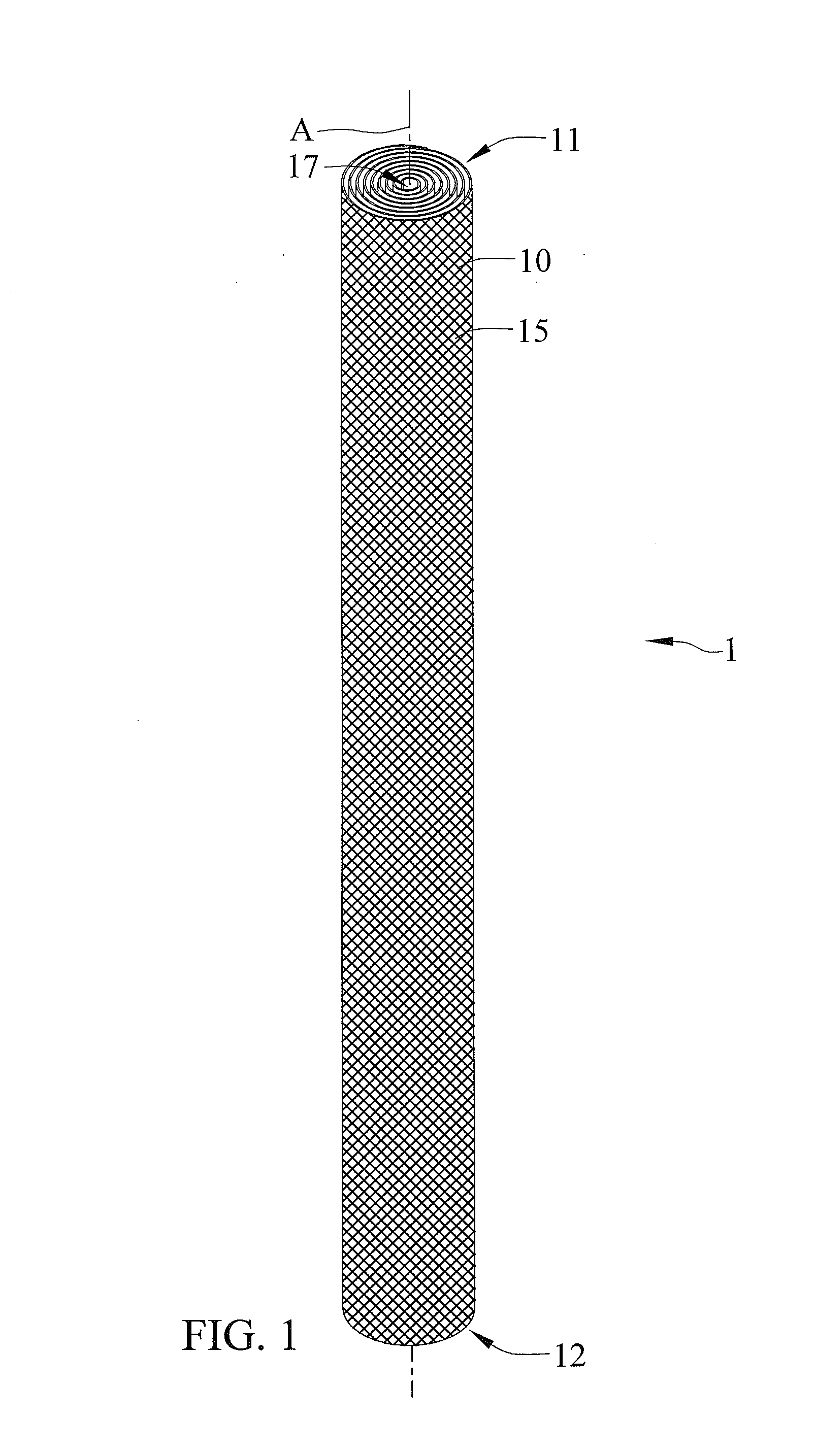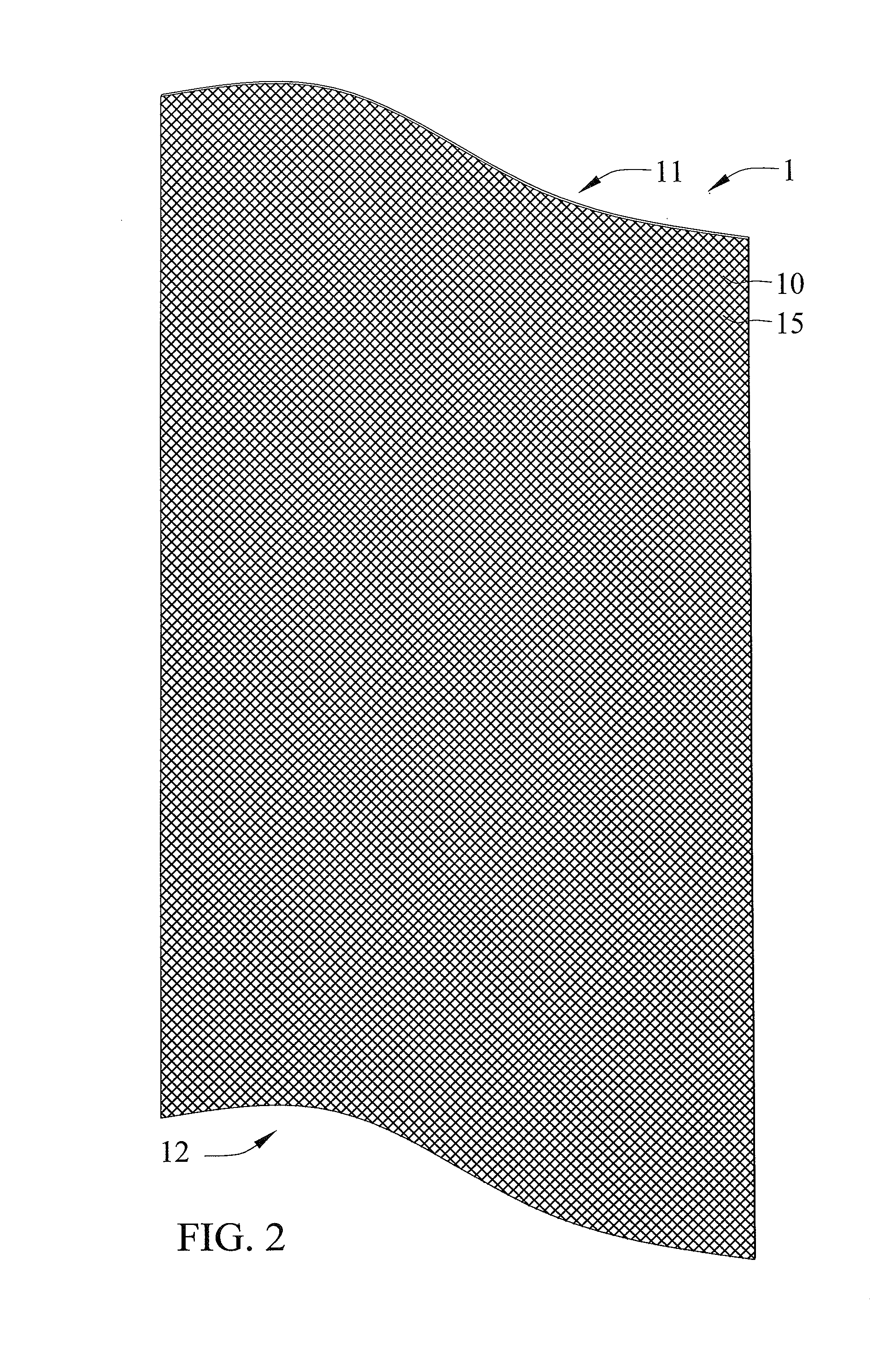Metallic Wick
a technology of wick and wick body, which is applied in the field of wick, can solve the problems of inconvenient and wasteful, users can only replenish fuel or replace a new wick, and the wick is difficult to be inserted through the disk, so as to reduce manufacturing costs and draw more viscous fuel. the effect of speed
- Summary
- Abstract
- Description
- Claims
- Application Information
AI Technical Summary
Benefits of technology
Problems solved by technology
Method used
Image
Examples
Embodiment Construction
[0047]FIGS. 1 through 3 show a first embodiment of a metallic wick according to the present invention shown in the drawings. The metallic wick 1 generally includes a mesh member 10 made of metal and rolled into a tubular shape and having a plurality of circles spaced from each other along a longitudinal axis A to form an Archimedean spiral cross-section perpendicular to the longitudinal axis A. The mesh member 10 includes first and second ends 11 and 12 disposed opposite to each other along the longitudinal axis A, and first and second surfaces 13 and 14 respectively extended from the first end 11 to the second end 12 thereof and arranged opposite to each other. Furthermore, the mesh member 10 essentially includes a plurality of metallic wires interlacing and overlapping each other to form into a plurality of meshes 15 penetrating the first and second surfaces 13 and 14 between the first and second ends 11 and 12 thereof. Each of the plurality of meshes 15 is formed in a quadrilater...
PUM
 Login to View More
Login to View More Abstract
Description
Claims
Application Information
 Login to View More
Login to View More - R&D
- Intellectual Property
- Life Sciences
- Materials
- Tech Scout
- Unparalleled Data Quality
- Higher Quality Content
- 60% Fewer Hallucinations
Browse by: Latest US Patents, China's latest patents, Technical Efficacy Thesaurus, Application Domain, Technology Topic, Popular Technical Reports.
© 2025 PatSnap. All rights reserved.Legal|Privacy policy|Modern Slavery Act Transparency Statement|Sitemap|About US| Contact US: help@patsnap.com



